
In the pervious article on MOA I introduced you to the ever-complicated Minute of Angle. That article was geared towards getting you ready to zero your AR15 and begin to understand what the click adjustment values were for the different versions of the AR15. In it I gave you a multitude of numbers that were common agreed upon MOA approximate values. I also gave you “Exact” values and “Close Enough” values based on those approximates and different means of achieving them.
Those common agreed upon values came from the Marine Zero PDF, US Army Zero Guide and the Appleseed Instructor Manual (these were all active links but have since died). In that article I eluded to the fact that these were merely approximates multiple times and that was due to the various reasons sited. I also grouped the M4 Carbine and the 16” Mid Length gas systems together when technically they have a different sight radius, even if only by ~2”.
If you thought about it you’d realize that the longer sight radius of the 16” mid-length should have had a lower MOA click value everything else being equal. The Appleseed Instructor manual does state that the 16” AR’s have an approximate FSP MOA of 1.875 per click.
A comment was made regarding the M4 Carbine and the 16” Mid-Length being grouped together and while correct in theory, in practice it makes no difference and here is why.
MOA Theory vs. Reality
MOA Theory? Ok, Ok, MOA is not theory. It’s a scientific fact based on math. No questioning that. So what do I mean by MOA Theory in regards to the AR15? No, the AR15 doesn’t subvert science. Remember those approximate MOA click values we just talked about? Yep, those are what I am referring to when I say MOA Theory vs. Reality. In theory the A2 sights have a specific MOA click value just like the 16” Mid Length just like the M4 Carbine. But theory is an educated guess until you back it up with experience. Which leads us to…
MOA Reality. The reality is that those approximate MOA click values are only a starting point, like I stated in the MOA intro article. With the formula provided we are going to put these MOA click values to the test and see if “Theory” holds up with “Reality”.
For this test we will be using multiple AR15’s, A2’s, A4’s, Mid Length 16” and M4 Carbines. We will be using different ammunition as well to see if this creates any variations in the supposed MOA click values. Some may argue that it shouldn’t as it’s based on sight radius, thread pitch etc. Of course it does, but what good is all that when your ammunition doesn’t agree with it in practice? This is why you must get out and shoot your guns and test this out for yourself.
The testing will be done at 25 yards verified with a laser ranger finder and all groups will be shot from the supported prone. The click adjustments will be 10 clicks for all data points.
– Front Sight Post Elevation
– Windage
– Rear Elevation Drum
The formula to find MOA click value is as follows:
– Fire a 3 shot group
– Give the sight 10 clicks in adjustment
– Fire another group.
– Find the POI center of each group and measure that distance.
– Divide that measurement in inches by 10
– Divide that number by the MOA value at 25 yards
And before you start trying to pick holes in the method, no I did not use a lead sled nor clamp any of these guns in a vise. That is not reality.
MOA at:
25y = 0.25”
50y = 0.5”
100y = 1”
MOA True Value at:
25y = 0.26175”
50y = 0.5235”
100y = 1.047”
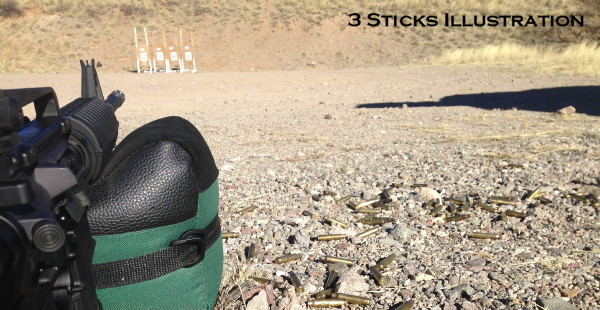
At 25 yards your POI center to POI center measures 4” on 10 clicks in adjustment.
4”/10 = 0.4 per click
MOA at 25y = 0.25
0.4”/0.25 = 1.6 MOA per click.
True MOA at 25y = 0.26175
0.4″/0.26175 = 1.5 MOA per click
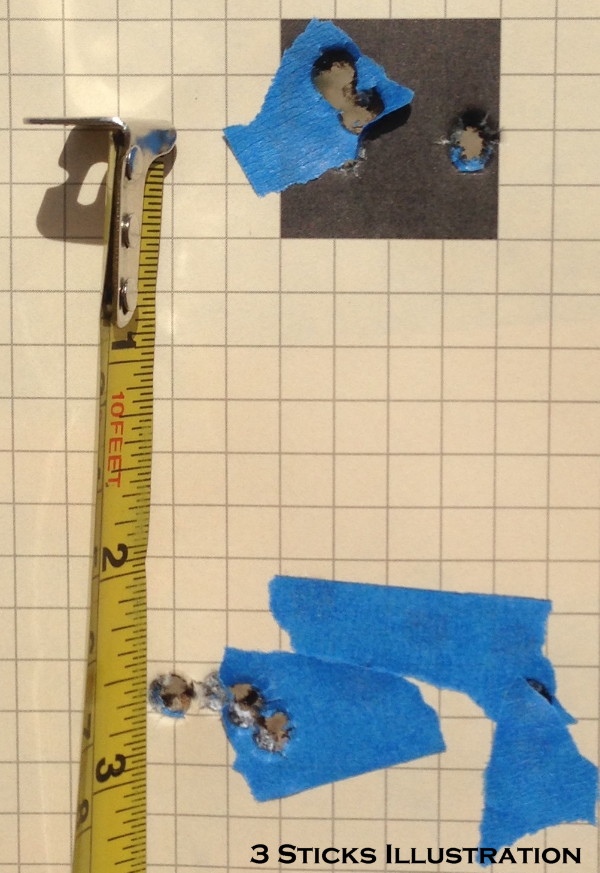
Uh, what’s this “True MOA” you’re talking about now?
“True MOA” is simply the exact MOA at that distance and not the rounded/”shooters” MOA value. This really doesn’t matter for an Iron sighted AR15 but I simply want to introduce you to it as you may see this more often in scoped rifles. Plus I want to help show you why with these Iron sight values they are merely approximates. There’s that word again…
For this test I was lucky enough to have friends and family loan me their AR15’s to increase my sample size, a big THANK YOU to all of you guys!
Ammunition used:
Federal .223 55gr FMJ
Federal 5.56 XM855 62gr “Green Tip”
Wolf .223 55gr FMJ
Wolf .223 62gr FMJ
These are the more common types of ammunition used and honestly, all I had on hand in bulk quantities.
Lets get started!
The A2/A4– I only got my hands on 1 of each, shorter barreled AR’s are definitely easier to come by.
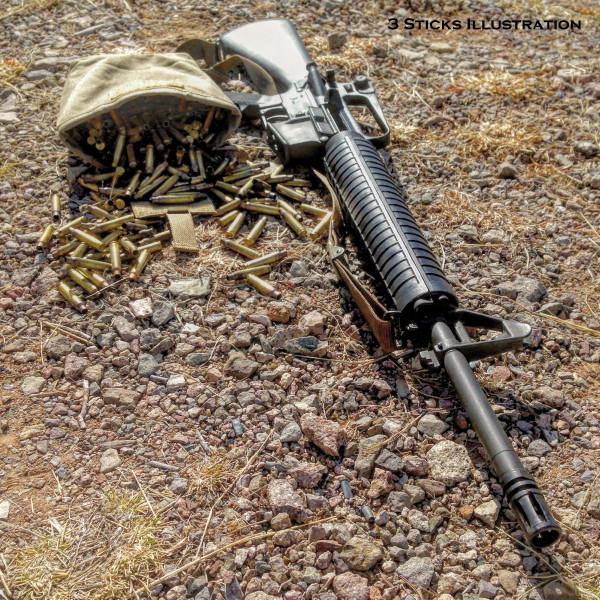
AR15 A2

Theory A2

Reality A2

AR15 A4

Theory A4

Reality A4
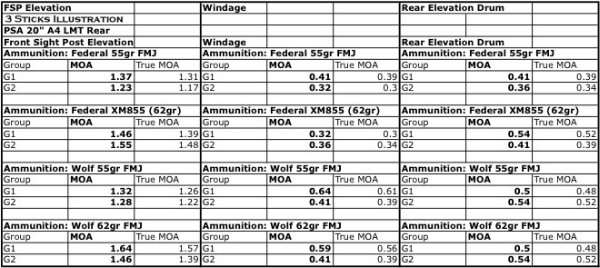
The M4

I was able to get 5 M4’s to test, most with detachable carry handles, one had a Daniel Defense Rear BUIS.
Theory

Reality
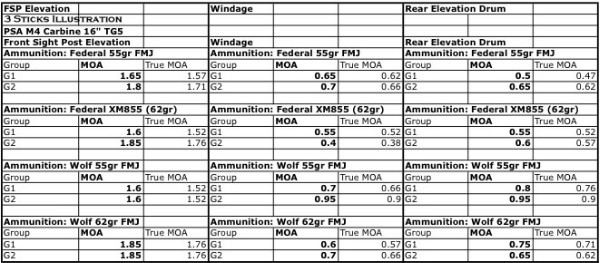
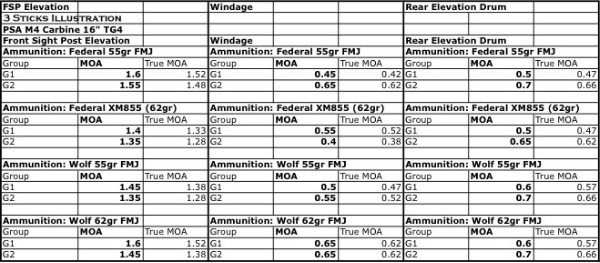

Here you see the fact that this DPMS M4 no longer stabilizes Wolf ammunition and started to have issues with XM855

Now for the DD Rear BUIS

Now for the 16″ Mid-Length AR15’s

Theory

1.875? Really?
Reality

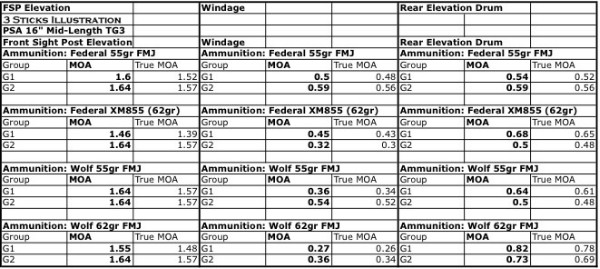
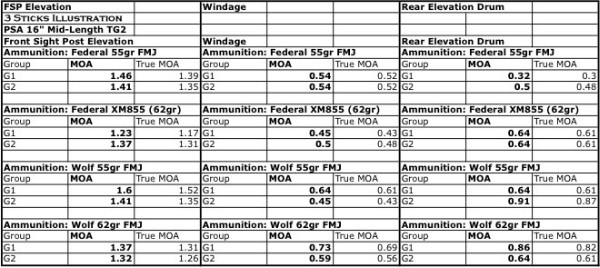
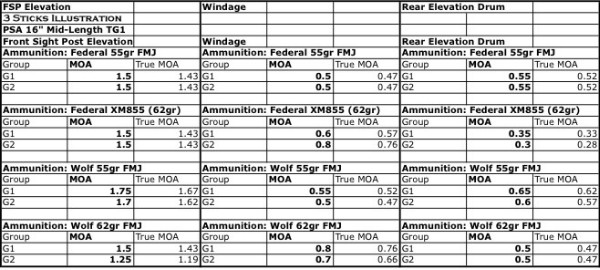
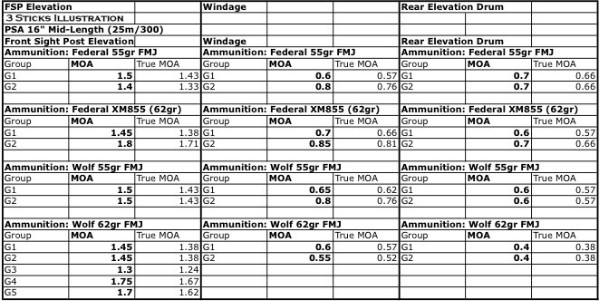
And that’s it folks. I hope this has been somewhat enlightening for you and has helped get you out of the notion that everything must be perfect and precise. Remember these are service grade rifles with service grade Iron Sights shooting service grade ammunition and the only way to know what you and your rifle are capable of is by SHOOTING IT!
*This post and the information herein is for informational and educational purposes only. Use at your own risk. Always follow the 5 rules of Firearms Safety when handling any firearm.
*If you like this content and would like to support the page you can do so here.


Leave a comment